Mitosis Open-Source Project: Opportunities for Community Contributions and Development
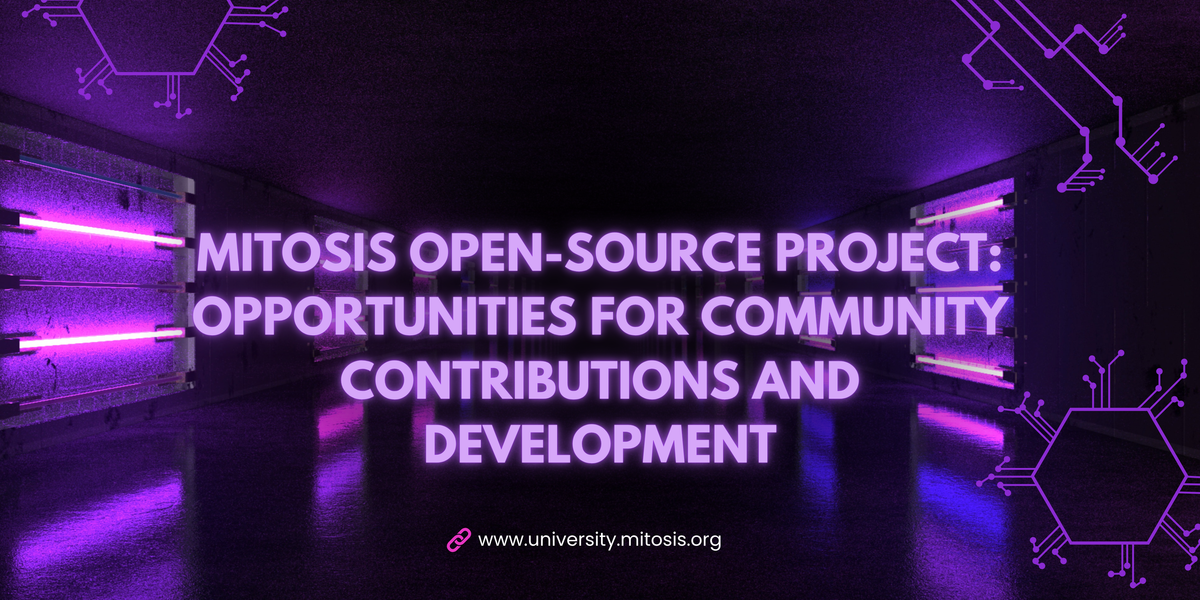
Introduction
In the ever-evolving landscape of software development, open-source projects have become a cornerstone of innovation, collaboration, and community-driven progress. Among these, Mitosis stands out as a compelling open-source frontend code repository that empowers developers to create reusable, framework-agnostic components for modern web applications.
While the core engine of Mitosis is not publicly available in the repository, the open-source frontend codebase offers a wealth of opportunities for developers to contribute, innovate, and shape the future of this transformative project which is building the network for programmable Liquidity.
Community contributions are the DNA🧬 of open-source projects like Mitosis. They foster a collaborative environment where developers from diverse backgrounds can share ideas, fix issues, and build features that enhance the project's utility and reach. By contributing to Mitosis, developers not only improve the tool itself but also gain valuable experience, build their portfolios, and connect with a global community of like-minded individuals. This article explores the myriad opportunities for community contributions and development within the Mitosis open-source project, highlighting the benefits, key areas for involvement, and practical steps to get started.
Thrilled to share we've made @MitosisOrg core repositories public! 🎉
— thai (@baddest_dev) July 1, 2025
- https://t.co/5CqaGJzSrB
- https://t.co/vYHgVYfjQS
(Audit reports included!)
Huge thanks to all contributors who made this possible, and a special shoutout to backend/frontend/devops contributors who work… pic.twitter.com/AJaqTn2M0O
Benefits of Community Contributions
Community contributions to open-source projects like Mitosis yield a range of benefits that drive both the project's success and the personal growth of contributors. These benefits extend beyond mere code improvements, impacting the project’s ecosystem, user experience, and overall adoption.
Accelerated Development and Innovation
When a diverse group of developers collaborates on a project, the pace of development accelerates significantly. Each contributor brings unique perspectives, skills, and ideas, leading to innovative solutions that might not emerge from a small, centralized team. For Mitosis, community contributions can introduce new ways to optimize the frontend codebase, enhance performance, or integrate with emerging technologies, pushing the project forward faster than a core team alone could achieve.
Improved User Experience and Interface
Mitosis is all about creating reusable, high-quality UI components. Community contributions can refine these components, making them more intuitive, accessible, and visually appealing. By focusing on user experience (UX) and user interface (UI) enhancements, contributors can ensure that Mitosis-generated components meet the needs of developers and end-users across different frameworks and platforms.
Enhanced Community Engagement and Adoption
Active community participation fosters a sense of ownership and belonging, encouraging more developers to adopt Mitosis in their projects. When contributors share their work through pull requests, tutorials, or discussions, they increase the project’s visibility and attract new users. This virtuous cycle of engagement and adoption strengthens Mitosis’s position as a go-to tool for cross-framework component development.
Opportunities for New Feature Development and Experimentation
Open-source projects thrive on experimentation. Contributors to Mitosis can propose and develop new features, such as integrations with design tools, enhanced debugging capabilities, or support for additional frameworks. This freedom to experiment not only enhances the project but also allows contributors to explore cutting-edge technologies and showcase their creativity.
Areas for Community Contributions
The Mitosis open-source frontend repository offers several avenues for contributors to make a meaningful impact. Whether you’re a seasoned developer or a newcomer, there’s a role for you in the Mitosis ecosystem. Below are the key areas where community members can contribute.
Bug Fixing and Maintenance
Every software project encounters bugs and technical debt. Mitosis is no exception even after their audit with Zellic. Contributors can play a critical role by identifying and fixing bugs in the frontend codebase, ensuring that components render correctly across frameworks and that edge cases are handled gracefully. Maintenance tasks, such as updating dependencies or refactoring code for better readability, also keep the project healthy and sustainable.
New Feature Development
The open-source nature of Mitosis’s frontend codebase invites developers to propose and build new features. These could include UI/UX improvements, such as enhanced component previews or better accessibility support, or integrations with tools like Figma, Storybook, or other developer ecosystems. By adding new functionality, contributors can make Mitosis more versatile and appealing to a broader audience.
Documentation and Testing Improvements
Clear documentation and robust testing are essential for any open-source project’s success. Contributors can improve Mitosis’s documentation by writing tutorials, updating README files, or creating examples that demonstrate best practices. Similarly, enhancing test coverage whether through unit tests, integration tests, or end-to-end tests ensures that the codebase remains reliable as it evolves.
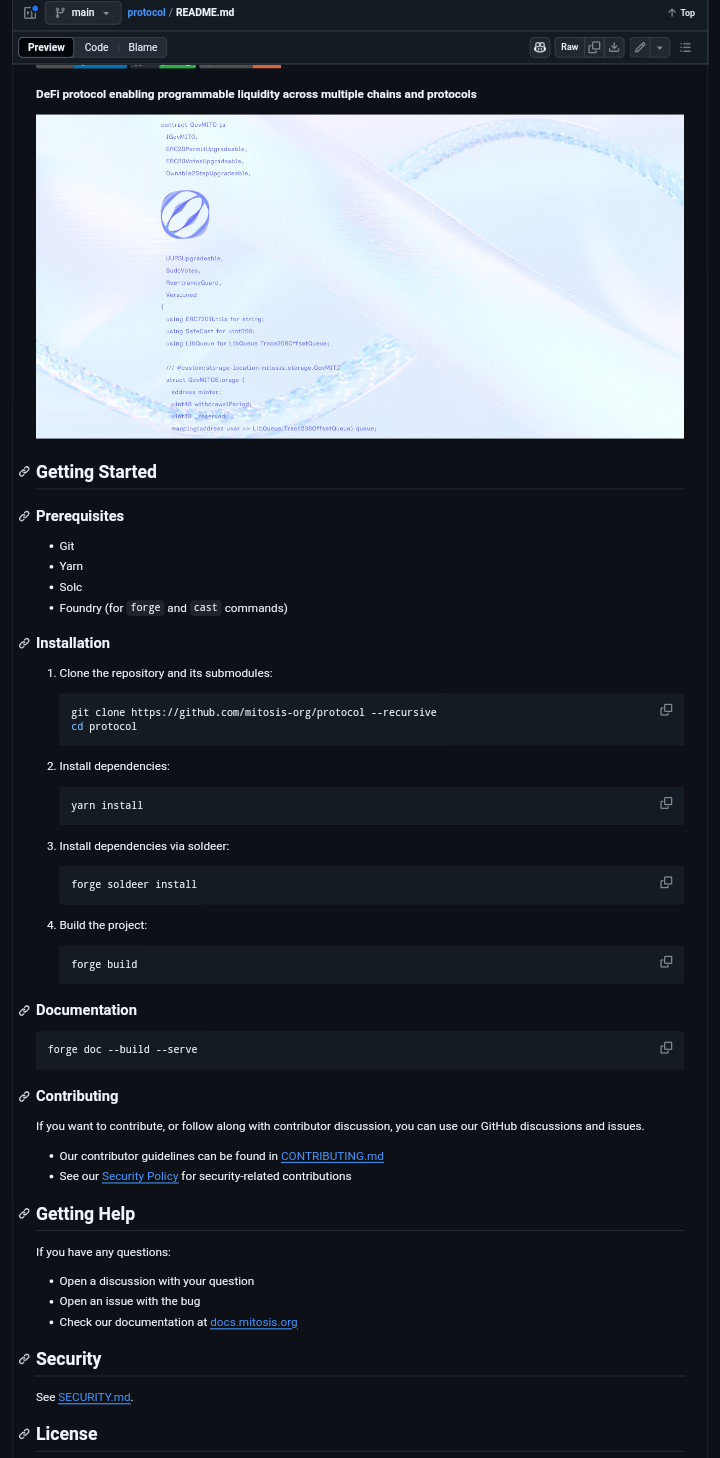
Community-Driven Initiatives
Beyond code, contributors can engage the Mitosis community through initiatives like writing blog posts, creating video tutorials, or organizing workshops. These efforts help onboard new users, share knowledge, and build a vibrant community around the project. For example, a contributor might create a guide on using Mitosis with a specific framework or share a case study of how they used Mitosis in a real-world project.
Getting Started with Mitosis Open-Source Code
Contributing to an open-source project like Mitosis can seem daunting, but the process is straightforward with the right guidance. This section provides an overview of the Mitosis frontend architecture and outlines the steps to start contributing.
Overview of the Frontend Architecture
Mitosis’s frontend codebase is designed to generate reusable components that can be compiled into multiple frameworks. The repository, hosted on GitHub, contains the code for the Mitosis CLI, component compiler, and various plugins that handle framework-specific transformations. While the core compilation engine is proprietary, the frontend codebase is fully open-source, allowing contributors to work on tools, interfaces, and integrations.
The architecture is modular, with clear separation between the CLI, plugins, and utilities. Key components include:
- Mitosis CLI: A command-line interface for generating and compiling components.
- Plugins: Framework-specific plugins (e.g., for React, Vue, Svelte) that transform Mitosis components into framework-compatible code.
- Utilities: Helper functions and tools for tasks like parsing, validation, and optimization.
Understanding this structure is crucial for contributors, as it helps them identify where their changes fit within the project.
Contributing to the Codebase
To contribute to Mitosis, follow these steps:
- Set Up the Development Environment:
- Fork the Mitosis repository on GitHub.
- Clone your fork to your local machine.
- Install dependencies using
npm installoryarn install. - Run the project locally to ensure everything works as expected.
- Find an Issue to Work On:
- Browse the repository’s issue tracker for bugs, feature requests, or tasks labeled “good first issue” for beginners.
- Comment on an issue to let maintainers know you’re working on it.
- Make Changes:
- Create a new branch for your work (
git checkout -b feature/your-feature-name). - Write clean, well-documented code following the project’s coding guidelines.
- Add or update tests to cover your changes.
- Create a new branch for your work (
- Submit a Pull Request:
- Push your branch to your fork (
git push origin feature/your-feature-name). - Create a pull request (PR) on the Mitosis repository, describing your changes in detail.
- Respond to feedback during the code review process.
- Push your branch to your fork (
- Engage with Maintainers:
- Be open to suggestions and iterate on your code as needed.
- Once approved, your changes will be merged into the main codebase.
By following these steps, contributors can make meaningful additions to Mitosis while learning about open-source workflows and collaboration.
Or alternatively try contributing directly on GitHub, You can head to issues section or Pull requests if you are familiar with Git.

Opportunities for Development and Innovation
Mitosis’s open-source frontend codebase is a fertile ground for developers looking to innovate and push the boundaries of component-driven development. Below are some exciting opportunities for contributors to explore.
Building New UI/UX Features or Integrations
The frontend codebase is ripe for UI/UX enhancements. Contributors can develop features like interactive component previews, real-time code editors, or integrations with design tools like Figma or Sketch. For example, a contributor might create a plugin that allows designers to export Figma components directly into Mitosis-compatible code, streamlining the design-to-development workflow.
Developing Community Tools or Applications
Beyond the core codebase, contributors can build tools and applications that enhance the Mitosis ecosystem. Examples include:
- Component Libraries: Curated collections of Mitosis components for specific use cases, such as e-commerce or data visualization.
- CLI Extensions: New commands or options for the Mitosis CLI to support additional workflows.
- Community Dashboards: Web-based tools for visualizing Mitosis component usage or performance metrics.
These tools not only add value to Mitosis but also showcase contributors’ skills to potential employers or collaborators.
Collaborating with Other Projects or Developers
Mitosis’s framework-agnostic nature makes it an ideal candidate for collaboration with other open-source projects. Contributors can work on integrations with popular libraries like Tailwind CSS, Chakra UI, or Next.js, creating seamless workflows for developers. Additionally, collaborating with other Mitosis contributors through GitHub discussions or community forums fosters knowledge sharing and sparks new ideas.
Conclusion
The Mitosis open-source frontend codebase offers a wealth of opportunities for developers and community members to contribute, innovate, and grow. By participating in bug fixing, feature development, documentation, and community initiatives, contributors can accelerate Mitosis’s development, improve its user experience, and expand its adoption. The project’s modular architecture and open-source ethos make it accessible to developers of all skill levels, while its focus on framework-agnostic components opens the door to creative experimentation and collaboration.
For developers looking to make their mark in the open-source world, Mitosis is an ideal starting point. Whether you’re fixing a small bug, building a new feature, or creating a community-driven tool, your contributions can shape the future of this powerful project. Visit the Mitosis GitHub repository, explore the issues, and join the community today. Together, we can build a more reusable, accessible, and innovative web development ecosystem.
Useful Links
Mitosis Protocol GitHub repository
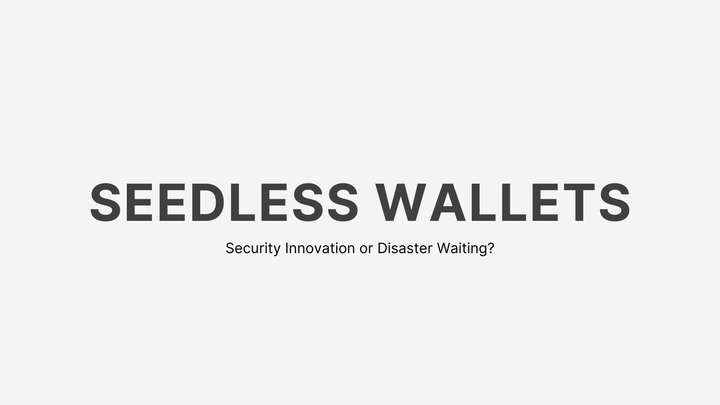
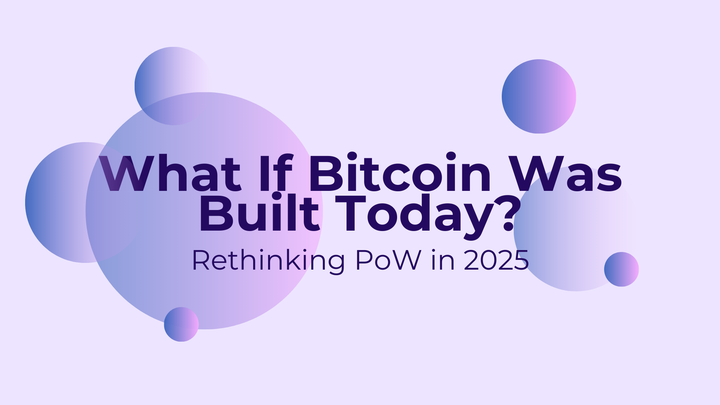
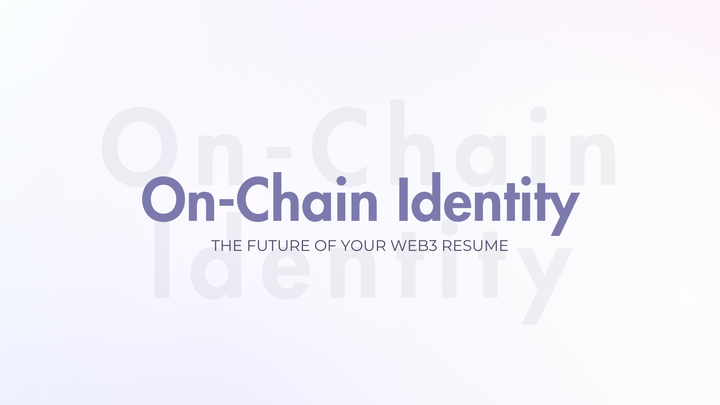
Comments ()